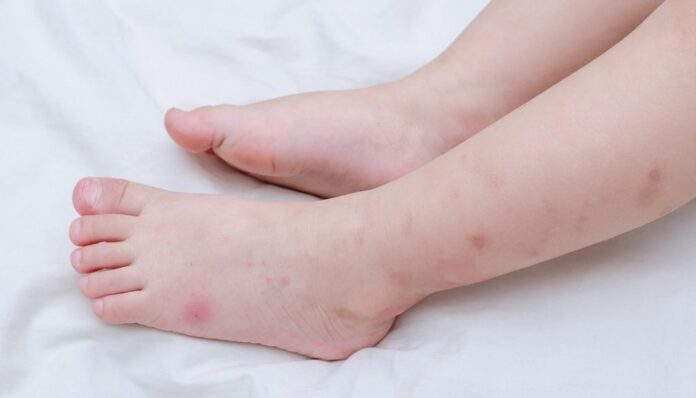
Unwanted Guests: How to Identify and Treat Bed Bug Bites on Your Feet
Bed bugs, small insects known for their notorious bites, have become an unwelcome problem in many households. These persistent creatures are known to infest homes, hotels, and even public places, making their presence a cause of great distress. While bed bugs are commonly associated with their bites on exposed areas like the arms and legs, bites on the feet are also prevalent. In this article, we will discuss how to identify bed bug bites on your feet and effective treatments to alleviate the discomfort they bring.
Identifying Bed Bug Bites on the Feet:
Bed bug bites are usually small, raised, red bumps that can appear in clusters or a line formation. Although these bites can occur anywhere on the body, detecting them on the feet can be particularly challenging due to the constant use of footwear, which often disguises the signs. However, there are a few indicators that can help you identify bed bug bites on your feet:
1. Appearance: Bed bug bites are typically small, red welts with a darker spot in the center. These bites may be itchy and may develop blisters or hives in some cases.
2. Arrangement: Bed bug bites often appear in a linear or clustered pattern, resulting from the insect’s feeding behavior during the night. Look out for bites in a row or group on your feet, especially if you notice similar bites elsewhere on your body.
3. Delayed reaction: Bed bug bites may not show visible signs of inflammation immediately. It can take a few hours or days for the bites to become noticeable. Keep an eye on any unexplained red bumps or itching sensations on your feet after being in an infested area.
Treating Bed Bug Bites on the Feet:
If you suspect bed bug bites on your feet, it is crucial to address the discomfort and prevent potential infections. Here are some effective treatment options:
1. Clean the affected area: Wash the bitten area with mild soap and water. Gently pat dry to avoid further irritation.
2. Apply calamine lotion: Calamine lotion or a hydrocortisone cream can help relieve itching and reduce inflammation caused by bed bug bites. Apply a thin layer to the affected area several times a day.
3. Take antihistamines: Over-the-counter oral antihistamines can provide relief from itching and reduce swelling caused by the bites. Consult your pharmacist or doctor for the appropriate dosage and any potential side effects.
4. Avoid scratching: It may be tempting to scratch the irritated bites, but this can lead to further skin damage and increase the risk of infection. Resist the urge and keep your nails trimmed to minimize the damage caused by scratching.
5. Use cold compresses: Applying a cold compress or ice pack to the bitten area can help reduce swelling and alleviate itching. Wrap the ice pack in a clean cloth to avoid direct skin contact.
Preventing Bed Bug Infestations:
Prevention is the key to avoiding the discomfort and hassle of dealing with bed bug bites. Here are some preventive measures to keep your feet and your home safe from these unwanted guests:
1. Inspect your accommodation: When staying in hotels or renting a vacation home, thoroughly inspect your accommodation for any signs of bed bugs. Check the mattress, headboard, and any upholstered furniture for live bugs, excrement, or shed skins.
2. Keep your belongings elevated: While traveling, place your suitcase on a luggage rack or elevated surface rather than on the floor or bed. This reduces the likelihood of bed bugs hitching a ride back to your home.
3. Wash and heat treat: When returning from a trip, immediately wash and dry all your clothes, including shoes, at the highest temperature recommended for the fabrics. This helps kill any bed bugs that may have infested your belongings.
4. Mattress protection: Encase your mattress and box spring in a bed bug-proof cover. This prevents bed bugs from making their home in your sleeping area and makes it easier to detect any early signs of infestation.
5. Regular inspections: Routinely check your home, especially the areas where bed bugs are commonly found, such as the seams of mattresses, headboards, and furniture. Early detection ensures timely intervention and prevents infestations from spreading.
Conclusion:
Identifying and treating bed bug bites on your feet requires keen observation and prompt action. By recognizing the appearance and arrangement of the bites, you can distinguish them from other irritations. Treating bed bug bites with appropriate measures, such as cleaning the affected area, using calamine lotion, and taking antihistamines, can provide relief from itching and reduce inflammation. Prevention is also crucial in avoiding the hassle of dealing with bed bug bites. By inspecting accommodation, keeping belongings elevated, washing and heat treating items, protecting your mattress, and performing regular inspections, you can minimize the chances of these unwanted guests infesting your home.


















